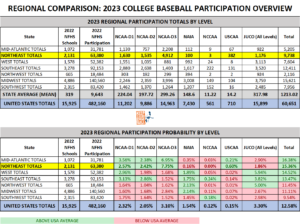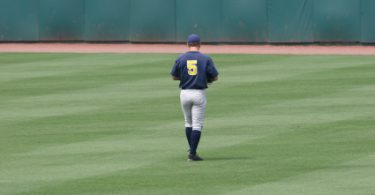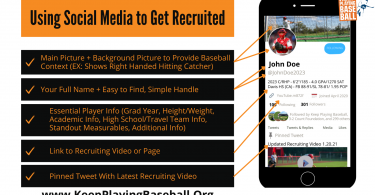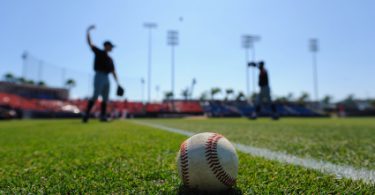You’re interested in playing college baseball, but what are your chances of making it to the next level? While many tout national probability as gospel, it turns out your odds of playing at the next level vary greatly depending on where you live.
If you live in Vermont and are wondering what percentage of high school graduates from your state play at each college level and where they are playing, you’ve come to the right place. In this article, we team up with our friends at College Baseball Insights to provide you with state-level overview of your chances to play at the next level.
You can see an overview of our resources, methodology, and limitations on our College Baseball Participation Overview Main Page, as well find overviews on other states and regions.
Vermont
In the table below, you’ll see how many high school players from Vermont are playing at each level of college baseball, the probability of playing at each college level, and how Vermont compares nationally and to other states in the Northeast Region. You can see the complete Northeast breakdown HERE.
Where Are They Playing?

Vermont Players by Division (83)
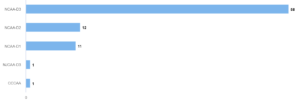
Image and data credit: College Baseball Insights
The Breakdown
For a small northern state with cold weather, Vermont moves a respectable 11.96% of it’s high school players on to the college level. Vermont’s 8.36% D3 participation rate is good for 3rd best in the region and nearly 3 times the national average of 3.10%. For all remaining levels, Vermont falls below the national and regional averages. In order from highest to lowest participation rates, the Great Mountain State has 1.73% D2, 1.59% D1, 0.29% junior college, and 0.0% NAIA participation rates. Vermont’s 1 D2 and 4 D3 programs are home to 29 of the state’s 83 college baseball players. Only 7 of those 83 players attend schools outside of our Northeast Region states.
Want to see additional states and regional breakdowns? Find them HERE.
Limitations
This article was written with data and insights from 3rd party sources, College Baseball Insights and NFHS High School Participation Data. Data and insights are subject to revision and/or change. We’ve attempted to display as accurate a picture as possible with the information that is available. Readers should be aware that college baseball roster data is fluid and changes throughout the year. Every attempt is made to reconcile data and keep up with changes, but this article may not reflect the changes or updates from 3rd parties. Insights cannot account for gap year programs, misreported roster information, or other inaccuracies which may slightly alter the numbers and percentages used in this article. Insights are subject to change and are based on best available information.


